Snapdragon 8 Gen 2: Image signal processor and camera capabilities
Cameras support remains a critical part of Qualcomm’s system-on-chip, so the Snapdragon 8 Gen comes equipped with the Spectra 18-bit triple cognitive image signal processor (ISP). For the first time, the Spectra ISP is powered by artificial intelligence with the help of an AI neural engine.
The AI neural engine can recognize faces, facial features, hair, clothes and sky among other things, optimizing and image tuning each part of a photo. It’s known as real-time semantic segmentation, allowing the ISP to recognize and optimize each aspect within a frame. Snapdragon chipsets have supported semantic segregation since the Snapdragon 865, but now it’s part of the hardware itself. That means the AI engine is talking to the ISP, telling it whether each pixel makes up a face or sky or some other part of the picture; the ISP then processes that pixel accordingly.
(Image credit: Tom’s Guide)
Last year’s Snapdragon 8 Gen 1 chipset put bokeh blurs in the hands of the hardware. That feature’s being improved with the Snapdragon 8 Gen 2 so that the size and shape of the blur can change on the fly.
The Snapdragon 8 Gen 2 can support photo capture of up to 200MP — good news for all those rumors of a Samsung Galaxy S23 Ultra with a 200MP main camera. You’ll also get support for 8K HDR video capture in 10-bit HDR.
We got a chance to see some camera demos during the November Snapdragon Summit, and there are 5 killer camera features supported by the Snapdragon 8 Gen 2 that you should get excited about.
Процессор Snapdragon — какой лучше
Тесты тестами, но больший интерес для нас представляет сравнение на опыте реального использования. С этой целью китайцы сравнили Xiaomi 12S Ultra — самого дорогого представителя 12-й серии на Snapdragon 8+ Gen 1, и на Snapdragon 8 Gen 2.
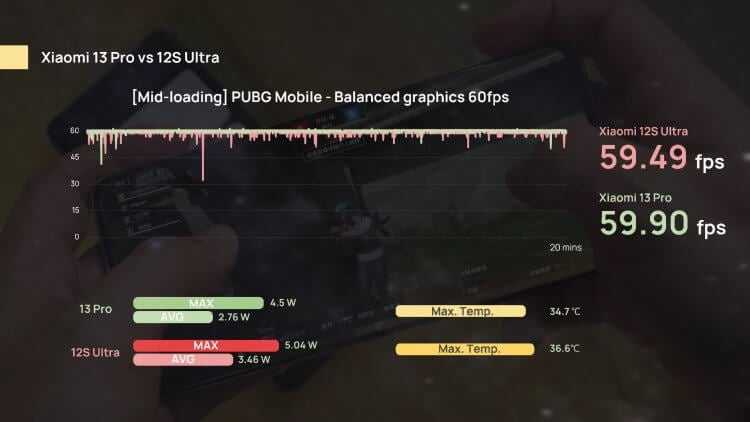
Snapdragon 8 Gen 2 хорош не только в бенчмарках, но и в обычных условиях эксплуатации
На протяжении 20-ти минут в PUBG Mobile на сбалансированной графике оба смартфона выдали стабильные 60 кадров, однако нагрев корпуса Xiaomi 13 Pro в таком сценарии составил 34,7°C, а Xiaomi 12S Ultra — 36,6°C. За новинкой на Snapdragon 8 Gen 2 также более щадящее энергопотребление (3,46 Вт против 5,04 Вт). Говоря простыми словами, 13 Pro меньше нагревается и медленнее разряжается.
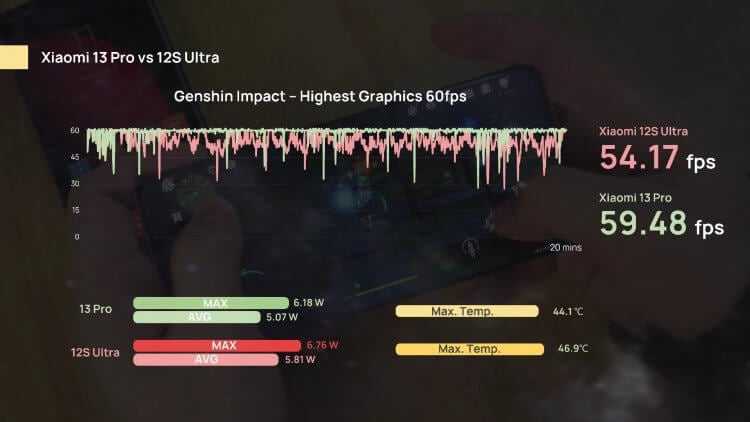
Это первый процессор, позволяющий играть в Genshin Impact с идеальным фреймрейтом
Более серьезным испытанием для обоих смартфонов стал 20-минутный прогон игры Genshin Impact на максимальных настройках графики, где Xiaomi 13 Pro смог наконец продемонстрировать свое преимущество по части производительности: 59,5 fps против 54 fps. В то же время даже в таком ресурсоемком проекте телефон на Snapdragon 8 Gen 2 меньше греется и медленнее разряжается.
Таким образом, во всех сценариях новый чипсет кладет на лопатки Snapdragon 8+ Gen 1. А это, напомню, улучшенная версия Snapdragon 8 Gen 1, смартфоны на котором в той же игре Genshin Impact показывали фреймрейт на уровне 40-45 кадров в секунду, за пару-тройку часов высаживая аккумулятор в ноль.
Specifications:
| Processor | Qualcomm SM8550-AC Snapdragon 8 Gen 2 | |||
| Market (main) | Smartphone | |||
| ISA | ARMv9-A (64-bit) | |||
| Microarchitecture | Cortex-X3, Cortex-A715, Cortex-A710, Cortex-A510 |
|||
| Core name | Kryo | |||
| Family | Snapdragon | |||
| Part number(s), S-Spec | SM8550-AC | |||
| Release date | Q1 2023 | |||
| Lithography | 4 nm N4 | |||
| Cores | 8 | |||
| Threads | 8 | |||
| Base frequency | 2.0 GHz | |||
| Turbo frequency | 3.36 GHz | |||
| Energy cores | 3x Qualcomm Kryo Silver @ 2.0 Ghz | |||
| High performance cores |
1x Qualcomm Kryo Prime @ 3.36 GHz, 4x Qualcomm Kryo Gold @ 2.8 Ghz |
|||
| Cache memory | 8 MB | |||
| Max memory capacity | 24 GB | |||
| Memory types | LPDDR5X-4200 | |||
| Max # of memory channels | 4 | |||
| TDP | 9 W | |||
| GPU integrated graphics | Qualcomm Adreno 740 | |||
| GPU execution units | 5 | |||
| GPU shading units | 1,280 | |||
| GPU clock | 719 MHz | |||
| GPU FP32 floating point | 3,681.3 GFLOPS | |||
| Socket | SoC | |||
| AI accelerator | Qualcomm AI | |||
| DSP | Qualcomm Hexagon | |||
| ISP | Qualcomm Spectra | |||
| Max display resolution | 4K@60Hz | |||
| Video decoding | H.265, H.264 8K@60fps | |||
| Video encoding | H.265, H.264 8K@30fps, 4K@120fps | |||
| Max camera ISP | 200MP; 108MP; 64+36MP; 3x 36MP | |||
| Max video capture | 8K@30fps; 4K@120fps | |||
| Cellular technologies | 5G, HSPA, CDMA, EVDO, GSM, EDGE | |||
| GNSS | GLONASS, NavIC, Beidou, GPS, QZSS, Galileo |
|||
| Modem | Qualcomm Snapdragon X70 5G/LTE | |||
| LTE download speed | Up to 2.5 Gbit/s | |||
| LTE upload speed | Up to 316 Mbit/s | |||
| 5G download speed | Up to 10 Gbit/s | |||
| 5G upload speed | Up to 3.5 Gbit/s | |||
| LTE category | Cat 22 | |||
| Connectivity | USB-C, USB 3.1 | |||
| Wi-Fi | Wi-Fi 802.11 a/b/g/n/ac/ax/be Wi-Fi 7 | |||
| Bluetooth | Bluetooth 5.3, LE | |||
| Audio | Qualcomm Aqstic | |||
| AnTuTu | 1,253,156 | |||
| PassMark CPU Mark | 9,739 | |||
| (Android)Geekbench 4 single core | 8,474 | |||
| (Android)Geekbench 4 multi-core | 21,404 | |||
| (Android)Geekbench 5 single core | 1,468 | |||
| (Android)Geekbench 5 multi-core | 4,824 | |||
| (Android)Geekbench 6 single core | 2,066 | |||
| (Android)Geekbench 6 multi-core | 5,449 | |||
| (SGEMM)GFLOPS Performance | 227.9 GFLOPS | |||
| (Multi-core / watt performance)Performance / watt ratio | 2,378 pts / W | |||
| Amazon | ||||
| eBay |
How Different Is Snapdragon 8 Gen 2 for Galaxy?
According to Samsung, the prime CPU core in the Snapdragon 8 Gen 2 for Galaxy tops out at 3.36GHz. Relative to the standard version, Samsung’s variant has 5.3% and 5.7% higher CPU and GPU clock speeds, respectively.
According to GeekBench 5 benchmarks, the higher clock speed gives the Galaxy S23 Ultra an edge over the OnePlus 11, which runs the standard version of the Gen 2 chip.
Enobong Etteh’s of Boredatwork on YouTube shows that the Galaxy S23 Ultra scored 1548 in single-core CPU tests, 32% higher than OnePlus 11’s 1165. On multi-core tests, the S23 Ultra still beats OnePlus 11 although by just 3% (5042 compared to 4858).
While gaming, the YouTuber records nearly the same average frames per second while playing the best online Android FPS games like Call of Duty Mobile, PUBG, and Apex Legends. The S23 Ultra had an edge in some cases, but it barely recorded higher than 3fps on average over the OnePlus 11.
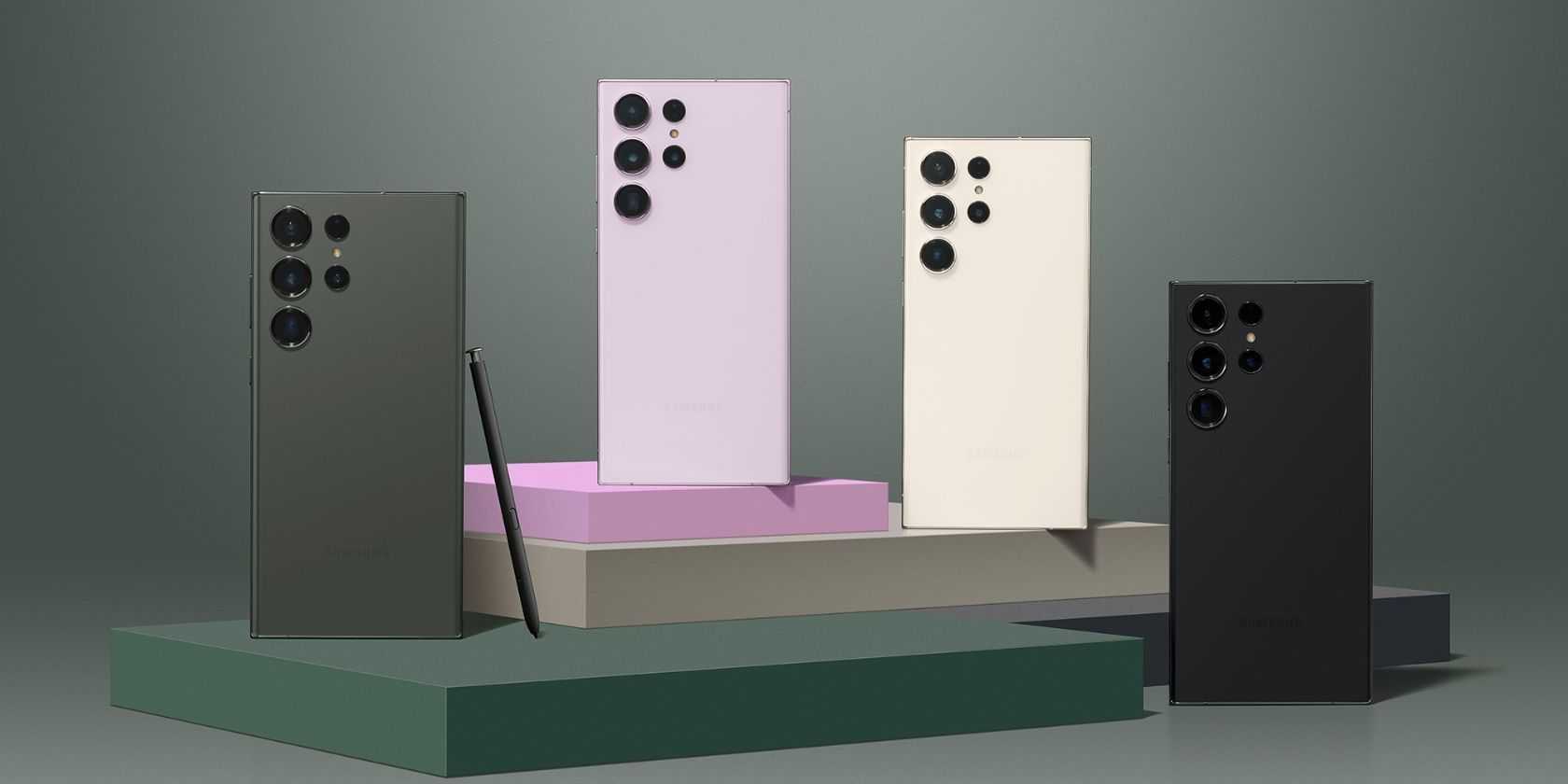 Image Credit: Samsung
Image Credit: Samsung
Separate tests performed by Tom’s Guide show the S23 Ultra performs 35% faster in Geekbench 5 single-core tests and 8% faster in multi-core tests (1578 vs. 1166 and 5081 vs. 4692). On the graphics side, the S23 Ultra still beats OnePlus 11 with 87.5fps (compared to 84fps) in 3DMark’s Wild Life Unlimited benchmark and 22.7fps vs. 22fps in 3DMark Wild Life Extreme Unlimited benchmark.
The overclocked CPU and GPU give the S23 Ultra an edge in performance, just as expected, proving Qualcomm’s claim of the chip being the «fastest Snapdragon ever». However, the difference is much more noticeable in single-core performance despite the chip’s prime core only having 5.3% higher maximum clock speeds.
Aside from the overclocking, Qualcomm says the S23 lineup is «the world’s first smartphone to use Snapdragon’s Cognitive ISP to enable real-time Semantic Segmentation to enhance images».
What that means is the device tries to understand objects in a captured photo for better processing and potentially better images. Qualcomm also adds that the new chip has an upgraded Hexagon Processor that the company says should result in better AI performance.
Meizu Note 9
Смартфон Meizu Note 9 называют главным конкурентом Redmi Note 7 Pro, поскольку модели похожи по дизайну и характеристикам. Мейзу получил 6,2-дюймовый экран IPS с разрешением FullHD+, 20-мегапиксельную фронтальную камеру и хороший процессор Snapdragon SD675. На борту 4/6 Гб ОЗУ, что гарантирует плавную работу системы. Есть два варианта памяти – 64 и 128 Гб, плюс возможность установить карту памяти. Емкость аккумулятора составила 4 000 мАч, благодаря чему смартфон продержится целый день без подзарядки. Дополнительно поддерживается быстрая зарядка mCharge.
За защиту данных отвечает сканер отпечатков пальцев mTouch, расположенный в кнопке Home под экраном. Дополнительно есть акселерометр, гироскоп, датчики приближения и освещения, электронный компас. Зарядка осуществляется через порт Type-C.За фотосъемку в смартфоне отвечает 48-мегапиксельная камера, f/1,7 c 6-элементной оптикой, дополнительно установлен 5-мегапиксельный датчик. Есть автофокус и светодиодная вспышка.
Преимущества:
- процессор Snapdragon 675 для игр на средних настройках;
- элегантный дизайн, соответствующий современным трендам;
- достаточный запас автономности благодаря емкому аккумулятору;
- FullHD-экран диагональю 6,2’’;
- адекватная цена.
Минусы:
корпус смартфона восприимчив к царапинам и механическим повреждениям.
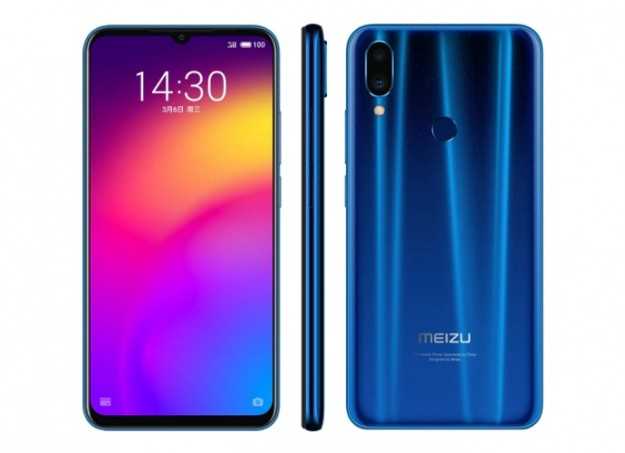
Which phones will use the 8 Gen 2?
At its launch event Qualcomm announced a total of 17 phone manufacturers that have already committed to using the Snapdragon 8 Gen 2 – and that’s not even counting Samsung, which which Qualcomm recently signed a long-term deal to provide Snapdragon silicon.
Qualcomm
Those are a few of the major brands involved, but which actual phones are likely to use the 8 Gen 2?
The first may be a phone in the Vivo X90 series, which is now confirmed to launch in China on 22 November. Vivo has separately committed to be the first to launch a Dimensity 9200 phone, but early leaks suggest that the X90 series may use both the Dimensity and Snapdragon chips across different models, so it could mark the debut of both pieces of silicon.
Next up is likely Xiaomi, which is almost always one of the first to launch the new Snapdragon silicon. It will almost certainly include the 8 Gen 2 in the Xiaomi 13 range, also expected to arrive before the end of the year.
Oppo has confirmed that we’ll see it in the Oppo Find X6 series, which will launch early next year, and we’re also expecting to see it in the OnePlus 11. Further down the line it should appear in phones like the Sony Xperia 1 V and Asus ROG Phone 7.
Then there’s Samsung. While the company’s logo doesn’t appear on Qualcomm’s presentation slide, the two companies have signed a deal through to 2030 to include Snapdragon chips in Samsung’s hardware. More importantly, Qualcomm itself has announced that it has a “global share” of chip shipments for the Galaxy S23 flagships, likely to launch in February 2023.
Beyond those big names, it would be hard to see any premium hardware that debuts after December 2022 using anything but the latest silicon – though that could mean this, or the Dimensity 9200 from rival MediaTek. So, if you’re thinking of buying a new high-end smartphone this year, you may just want to wait until the winter to see if something better comes along.
Equipment and design
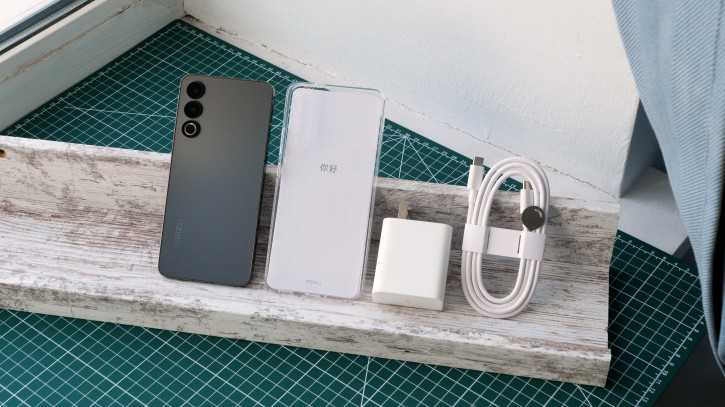
Already on the Meizu 20 box, it is clear that the companytried in originality. The packaging is thin but long. This allowed the manufacturer to fit a complete set in a relatively small volume: a 65-W charger, a Type-C-Type-C cable, documentation, a SIM needle with a branded cloud, and a simple silicone case. Together with the protective film applied on the screen from the factory, it provides basic protection to the smartphone after purchase.
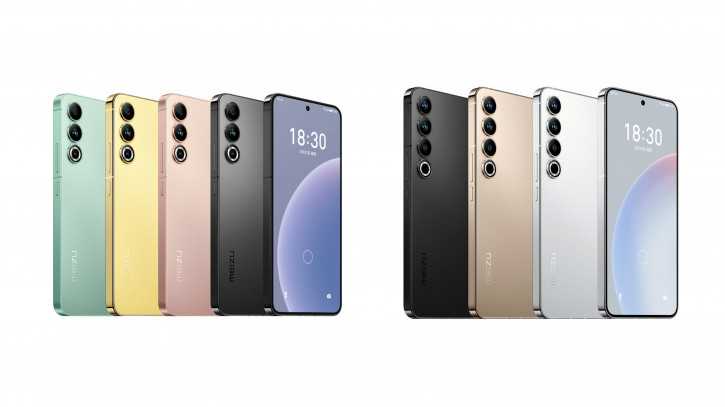 Meizu 20 — Meizu 20 Pro
Meizu 20 — Meizu 20 Pro
Meizu 20 comes in quite a wide rangerange of colors: in addition to black, there are pink, yellow and green. The colors are not too bright, but not too boring, even the black version does not look sad. Housing materials are standard: frosted glass on the back and glossy metal on the sides. The ends are made flat, and many say that this design does not have the same Meizu. I do not agree. Firstly, it looks like an iPhone, and Meizu has always been happy to borrow from the Cupertinos. Secondly, Meizu has always tried to make very neat camera designs, and the twenties are ahead of most Android competitors in this matter. Finally, remember Meizu U20: well, they look the same!
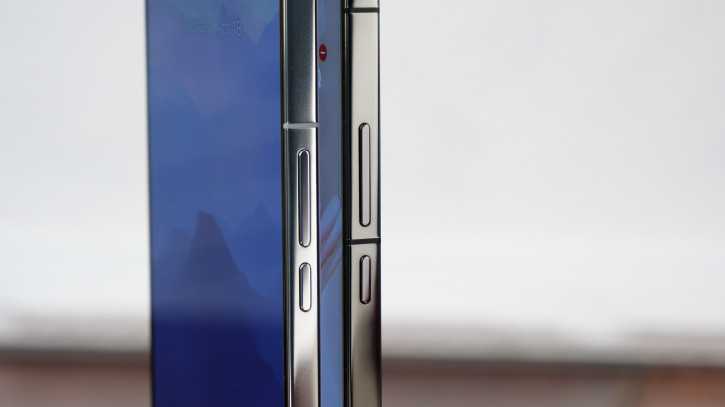 Meizu 20 Pro — Meizu 20
Meizu 20 Pro — Meizu 20
Talking about design from a content point of viewview, then everything is standard here: a speaker at the bottom, a Type-C port, a microphone and a dual SIM slot, a microphone and an infrared port at the top, buttons on the right. They are conveniently located, but overall ergonomics are so-so. Flat ends with such a large body is not an approach that can make a phone comfortable. In addition, the materials were rather slippery.
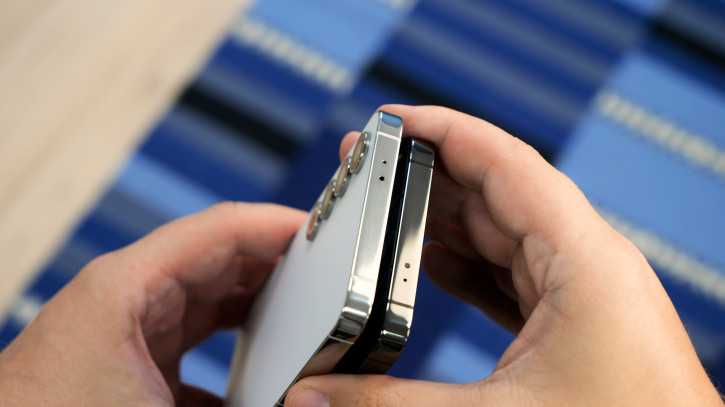 Meizu 20 Pro — Meizu 20
Meizu 20 Pro — Meizu 20
And now about the positive aspects.First, the stereo: not outstanding, but quite pleasant. Secondly, a linear vibration motor. Meizu chose the effects in a very unique way — it almost never vibrates, but mostly knocks. Woodpecker vibration motor. But I really liked it on the Meizu 15 Plus (review), and I really like it now. Thirdly, the under-screen fingerprint scanner here is ultrasonic, which gives it a colossal speed advantage over any analogues. It’s just instant, and it doesn’t burn your eyes out if you miss. After this miracle, I will be able to use optics again… sad.
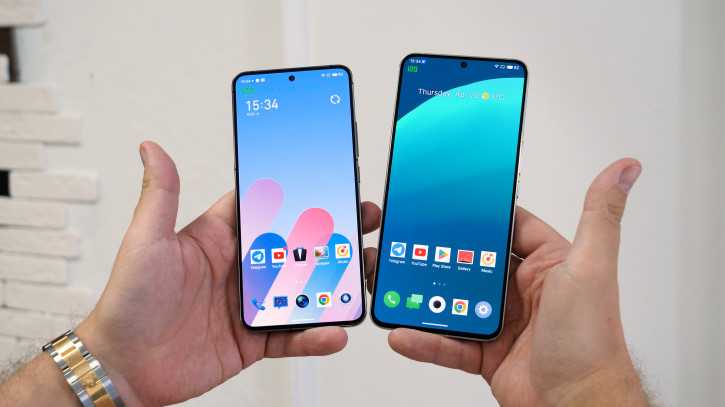 Meizu 20 — Meizu 20 Pro
Meizu 20 — Meizu 20 Pro
But I can’t praise the screen.On paper, everything seems to be fine: OLED, a billion colors, 144 Hz, 800 nits, 6.55″, 2400×1080 pixels, 20:9, 402 ppi. But in reality… I don’t know what’s wrong, but the screen seems a bit cloudy. Small inscriptions, icons — as if they were plush. Once upon a time, most AMOLEDs had this problem due to PenTile. Over time, they were able to somehow solve it, but Meizu went back in time and found such a cloudy panel. Although where did the 144 Hz screen come from in the past?
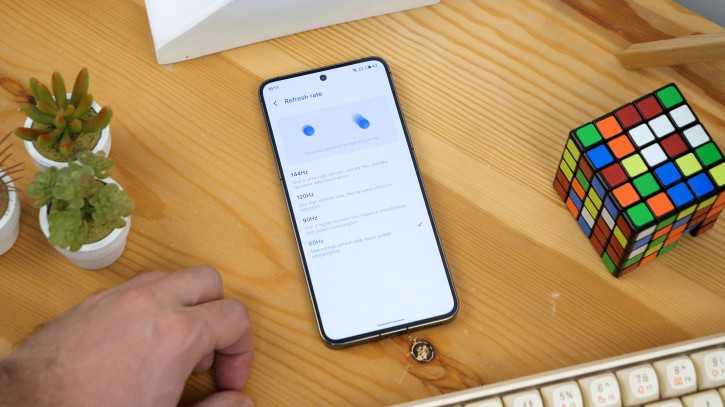
With hertz, by the way, there is a separate joke.The screen frequency is configured here: 60, 90, 120 and 144 Hz. At the same time, 90 and 120 are actually “auto modes”, where the screen falls to 60 Hz when inactive or in those applications about which Meizu decided that you don’t need hertz there. But 144 Hz works almost always: the frequency is not reset when the screen is not in use and in many applications. But not in all! In addition, AOD works at 144 Hz if you choose this frequency, although this is just some kind of insanity.
Meizu X8
Смартфон среднего уровня с экраном 6,15’’ имеет FullHD-разрешение и поддерживает 83% цветового пространства NTSC. Такие характеристики обеспечивают отличную цветопередачу и позволяют рассмотреть мельчайшие детали картинки.
В устройстве установлен процессор Snapdragon 710, работа которого дополнена технологией искусственного интеллекта Hexagon 685 AI. Телефон Meizu моментально обрабатывает данные и демонстрирует отличный баланс между автономностью и производительностью. Объем памяти: 4/64 и 6/128 Гб.
Meizu X8 предлагает неплохую систему камер: 12 Мп (основной объектив) + 5 Мп (телефотодатчик). Можете делать эффектные портреты с размытым фоном, снимать в режиме HDR или делать захватывающие панорамные снимки. За счет большого значения диафрагмы (?/1,9) и высокой светочувствительности получаются хорошие снимки даже ночью. За селфи отвечает 20-мегапиксельная фронталка.
Преимущества:
- доступная стоимость;
- процессор Snapdragon 710 позволяет играть в современные игры;
- камера с искусственным интеллектом;
- 20-мегапиксельная фронталка;
- большой FullHD-дисплей 6,2’’.
Недостатки:
- поликарбонатный корпус быстро царапается;
- фирменная оболочка FlymeOS уже не обновляется.
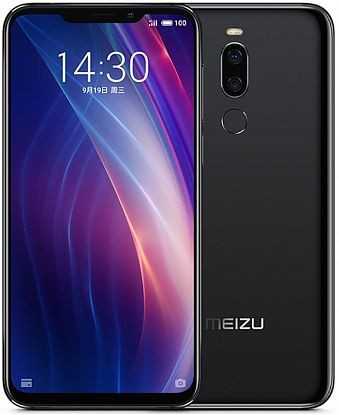
Камеры
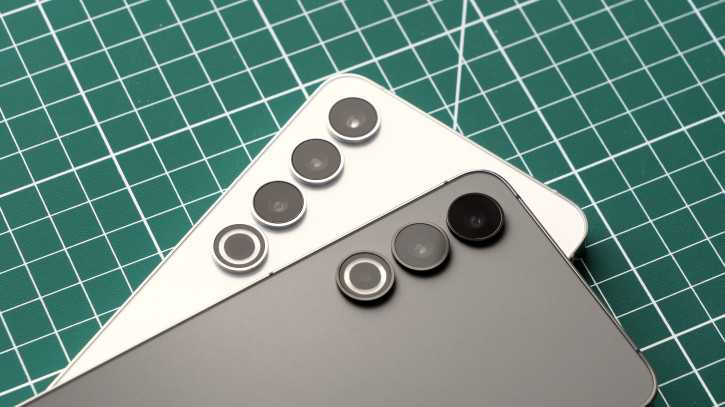 Meizu 20 Pro — Meizu 20
Meizu 20 Pro — Meizu 20
Как я уже писал, Meizu — сторонница очень аккуратного оформления камер. К сожалению, современного уровня флагманская камера – это неизбежно очень большая камера, и Meizu сделала выбор в пользу дизайна. Основной модуль с OIS основан на 50-Мп сенсоре Samsung GN5, это корейский аналог IMX766. Вспомогательные камеры тоже базируются на сенсорах Samsung: 16-Мп автофокусный ширик использует 3P9, а 5-Мп сенсор глубины – 5E9. Если хотите знать, где ещё использовались эти сенсоры, то GN5 – это основная камера Vivo X Fold и iQOO 10/11, 3P9 – это ширик серий Galaxy S10 / Note 10, а 5E9 был камерой для макро почти всех Xiaomi в 2020-2021 годах.
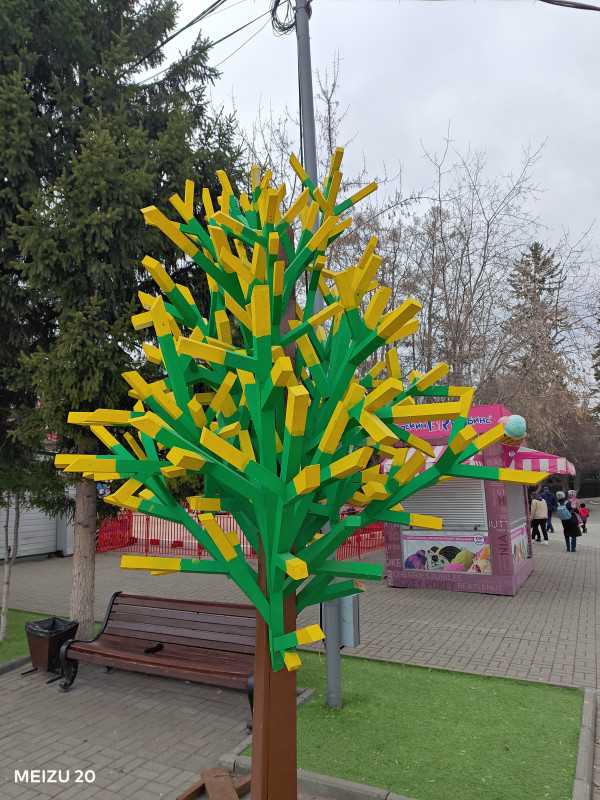
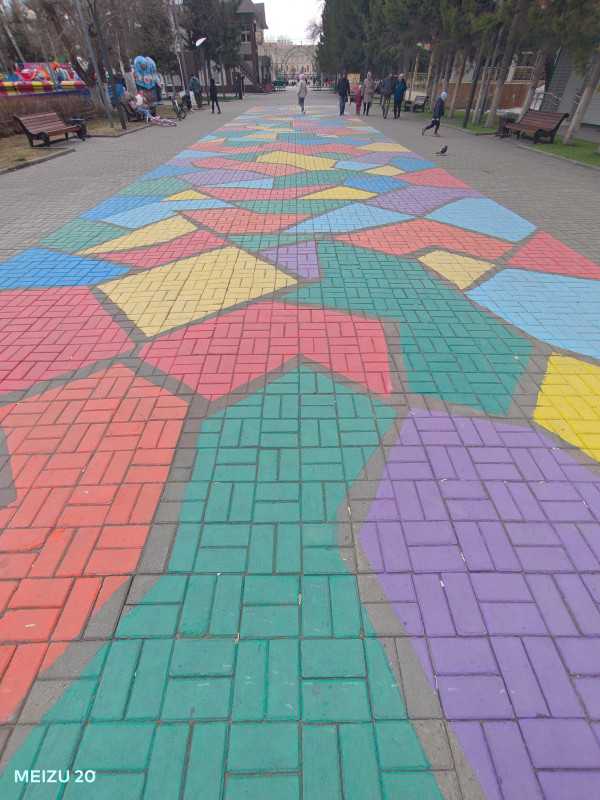
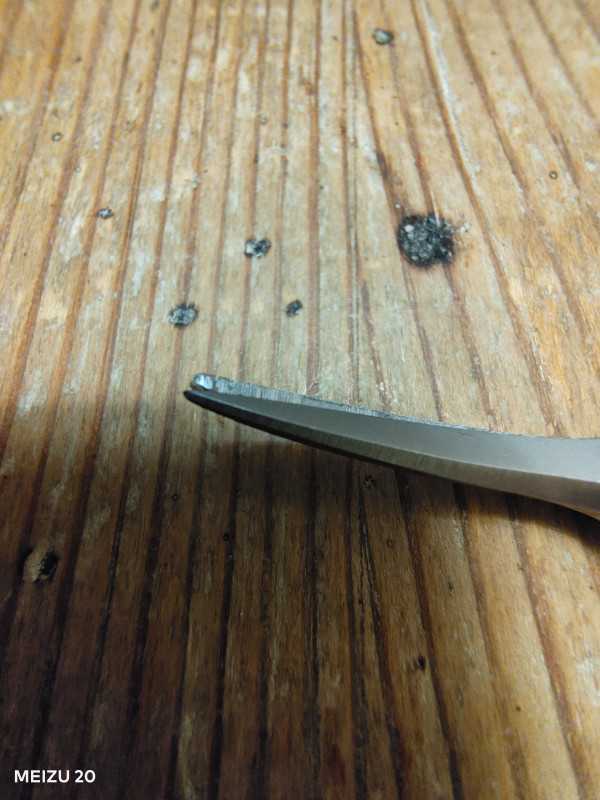
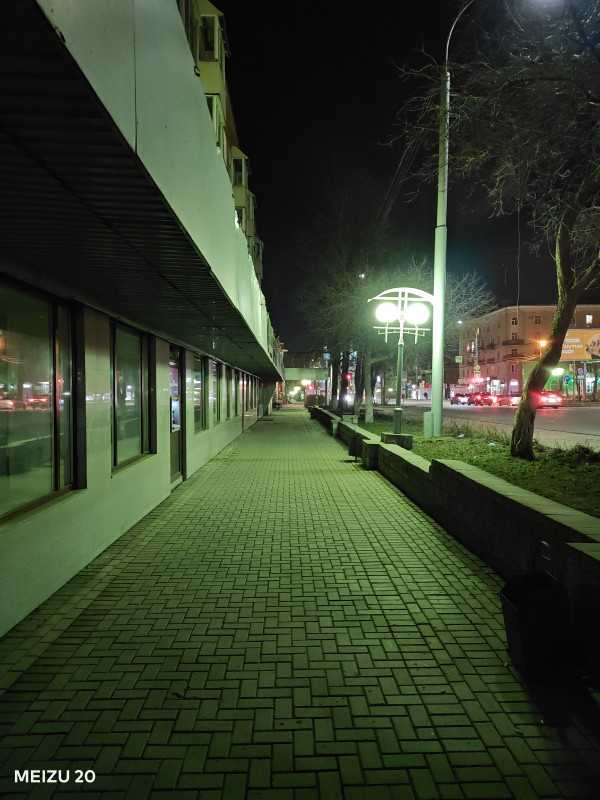
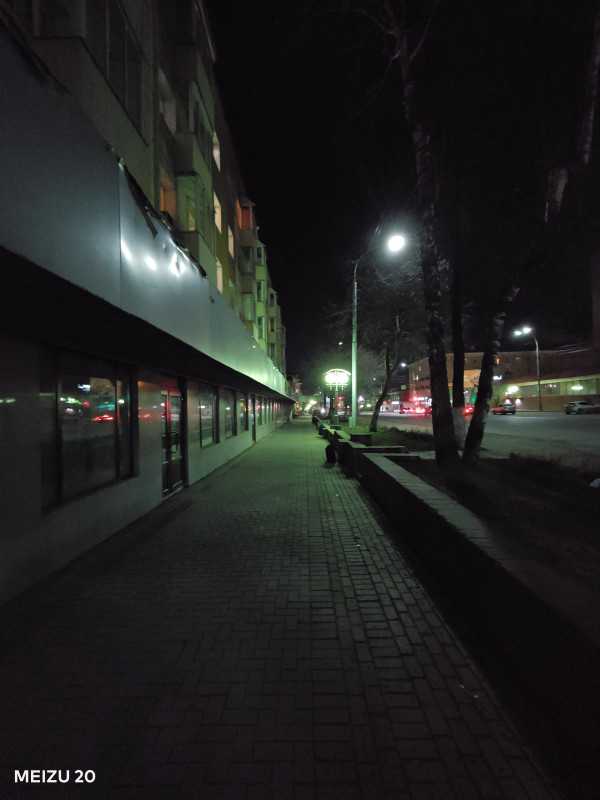




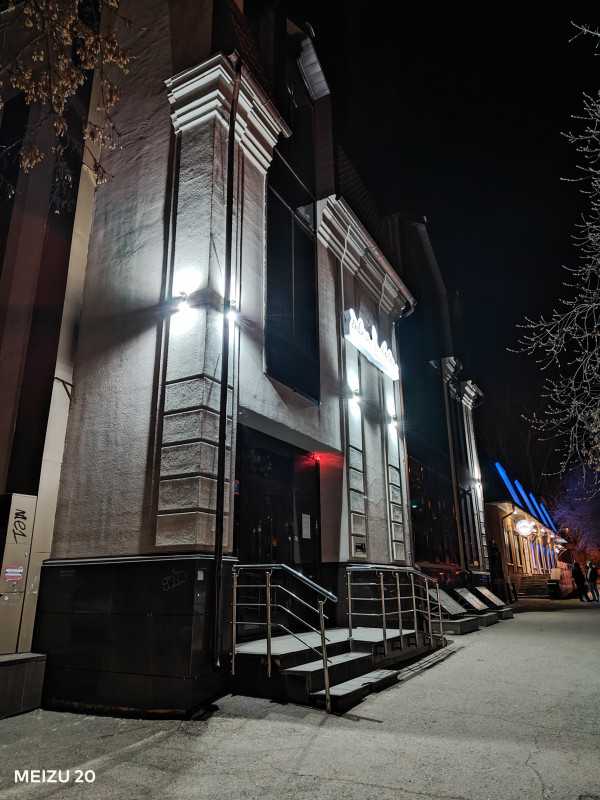
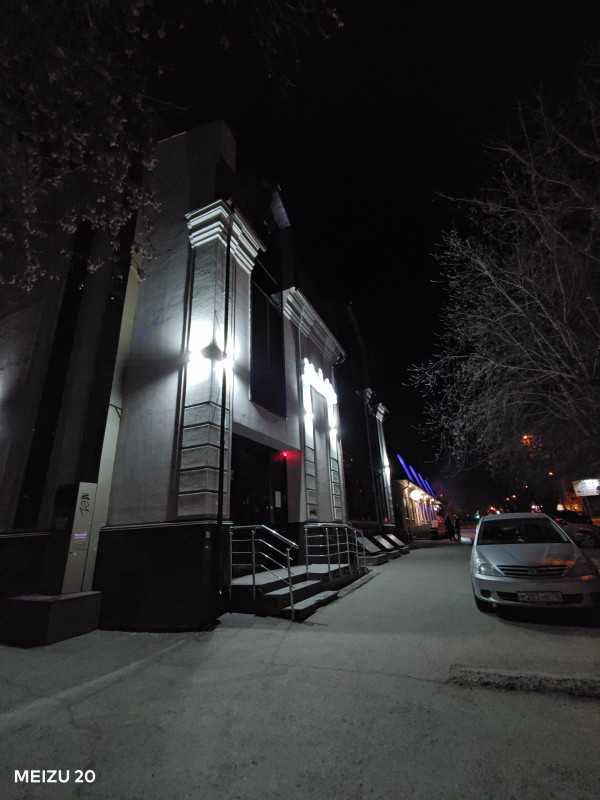





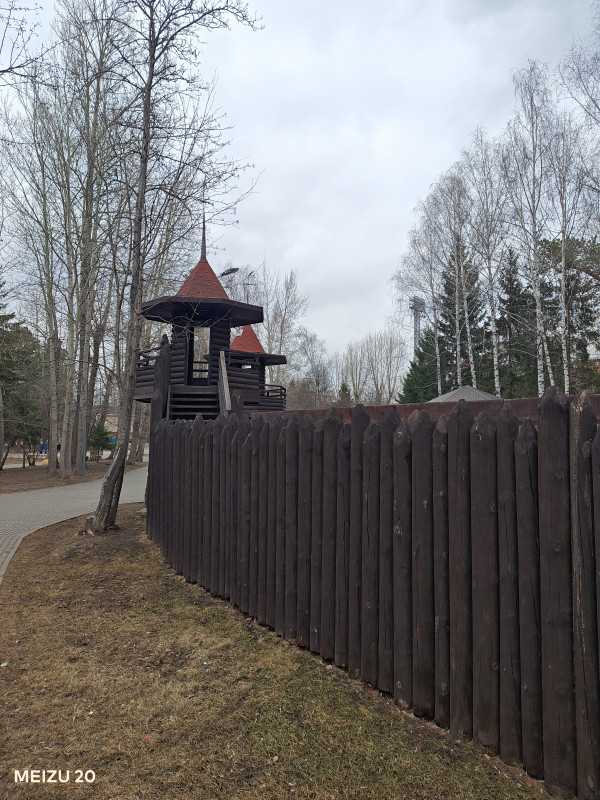





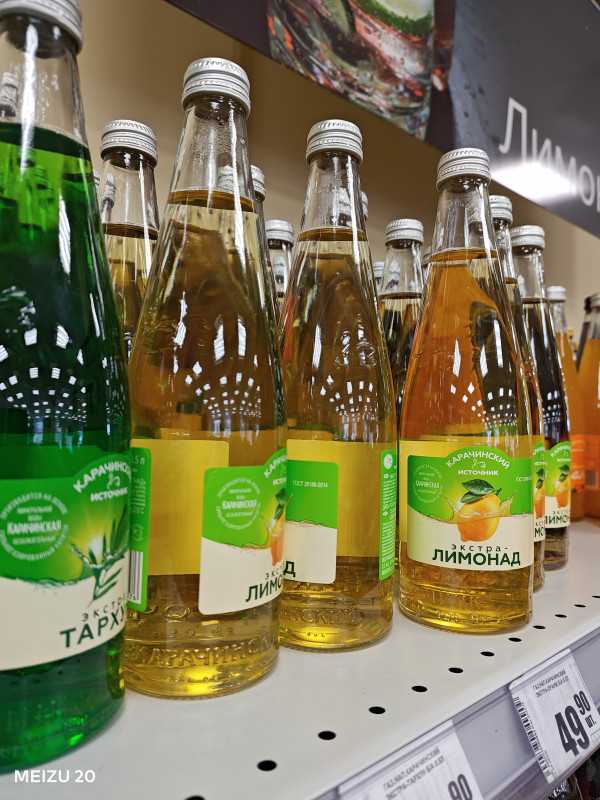
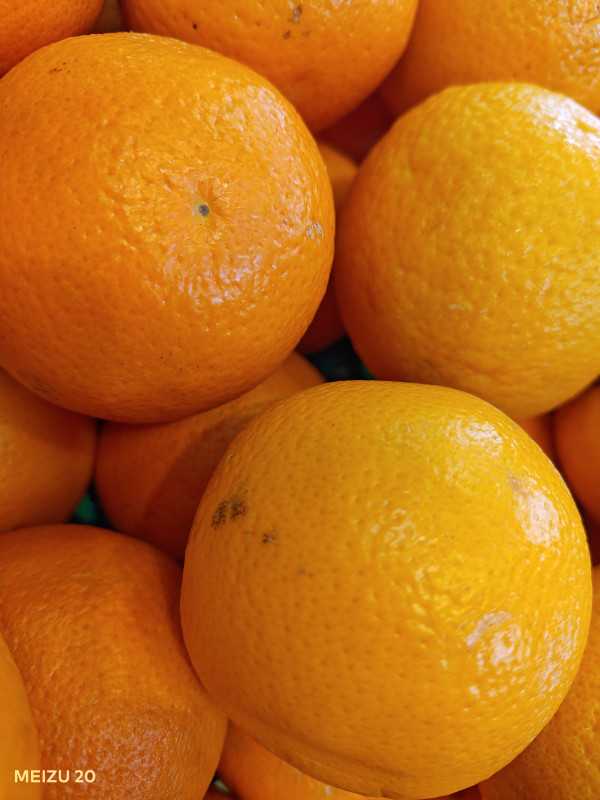
Хороший середняковый уровень. Разве что в середняках нечасто встретишь ширик с автофокусом, а тут он есть, и можно делать классные макро. Днём камера снимает хорошо, в меру приукрашивая кадры, но сохраняя близкую к честной цветопередачу. Ночью фото заметно хуже, но может помочь режим SuperNight. Совершенно обязательным является его использование на ширике: только в ночном режиме он снимает в полном разрешении, а не с даунскейлом в 12,5 Мп. Зачем вообще Meizu решила сжимать фотографии на ширик, я не понимаю.


Установив сенсоры Samsung во все три задние камеры, Meizu решила не останавливаться на достигнутом и воспользовалась Samsung GD2 во фронталке. Результат мне понравился. Хорошая фронталка, хотя и не какая-то особенная.
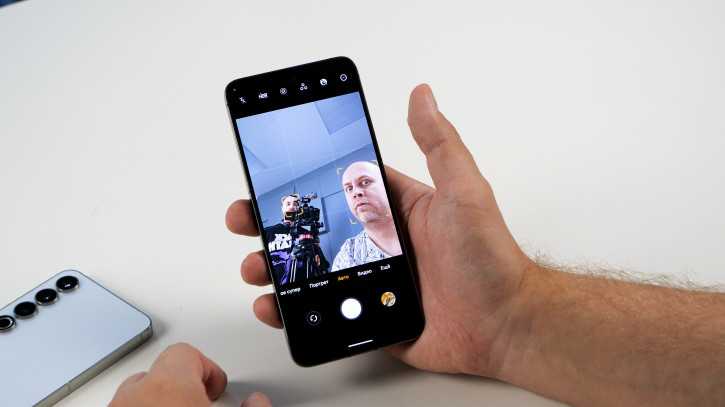
Видео можно записывать на основную камеру в 4320p@30fps или 2160p@60fps, на фронталку в 2160p@60fps или на ширик в 2160p@30fps с функцией переключения на основную камеру по ходу съёмки. Как Meizu любит, при съёмке видео OIS блокируется, поэтому камера полагается только на электронную стабилизацию, которая тут тоже очень слабая. В общем, без рук-штативов на ходу не снимать. Ну а звук пишется хорошо, это в плюсы занесём.
Программное обеспечение
Meizu 20 работает на Android 13 с фирменной оболочкой Flyme 10. С этой оболочкой мы встречаемся не так часто, поэтому хочется рассказать о ней поподробнее. Тем не менее, не вижу смысла рассказывать об устройстве интерфейса и предустановленных приложениях – в этом плане всё относительно стандартно. Расскажу скорее о впечатлениях и о том, насколько Flyme 10 адаптирована под использование за пределами Китая.
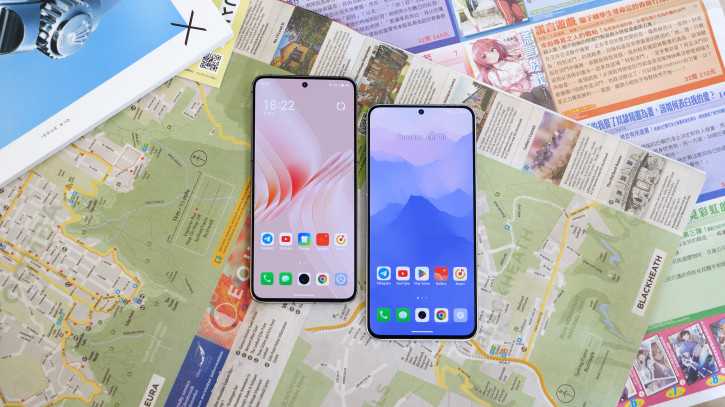 Meizu 20 — Meizu 20 Pro
Meizu 20 — Meizu 20 Pro
Во-первых, Flyme 10 удивляет тем, насколько Meizu любит тырить интерфейсные решения у Apple. Как вы, наверное, знаете, уже много лет шторка и экран блокировки – это одно и то же в iOS. И, как вы знаете, ни один Android-производитель не повторил это странное решение в своей оболочке. Ни один, кроме Meizu. Ни один, кроме Meizu, не заставляет вас располагать все иконки на рабочих столах, не предлагая меню приложений даже как опцию. Ну и так далее.
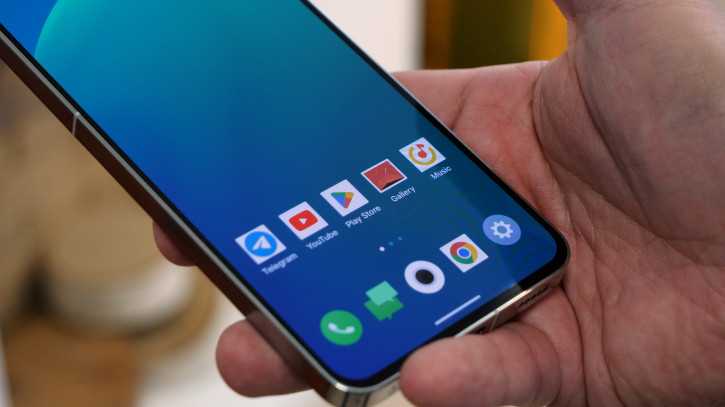
Во-вторых, Flyme – не самая стабильная и качественная оболочка. Евгений во время подготовки видеообзора трижды (!!!) сталкивался с её зависанием; я за неделю поймал только одно зависание в приложении камеры, возможно, помогло обновление ПО. Но и у меня бывали баги, например, когда я тестировал автономность, раздел батареи в «Настройках» сломался и просто убрал с графика данные за это время. Более старые и более свежие были, а два часа посередине – пустота.
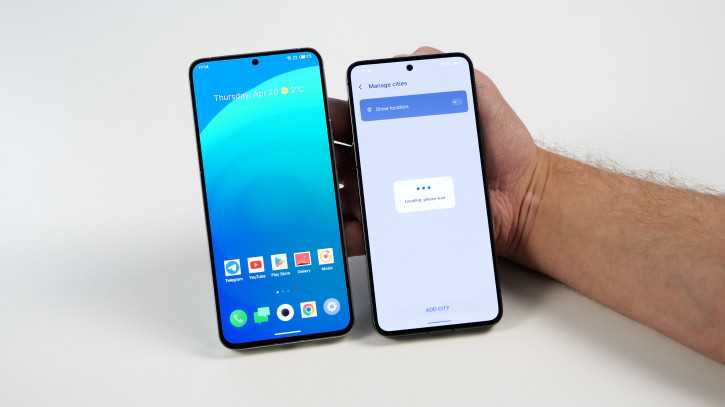 Meizu 20 Pro — Meizu 20
Meizu 20 Pro — Meizu 20
В-третьих, Flyme безумно заточена на Китай. В приложении погоды нет большинства российских городов (я нашёл только Москву, Питер, Екатеринбург, Владивосток и нечто под названием Vladimirskaya, других городов-миллионников нет) и нельзя выбрать текущую выбрать геолокацию. В шторку периодически падает предложение настроить автоматическое отклонение всех звонков с некитайских номеров. Русской локализации нет ни «из коробки», ни внутри системы с SetEdit; придётся пользоваться английским языком, хотя и тот ломаный. Спасибо хоть, что Google Play и другие гуглосервисы без проблем ставятся (апкшкой).
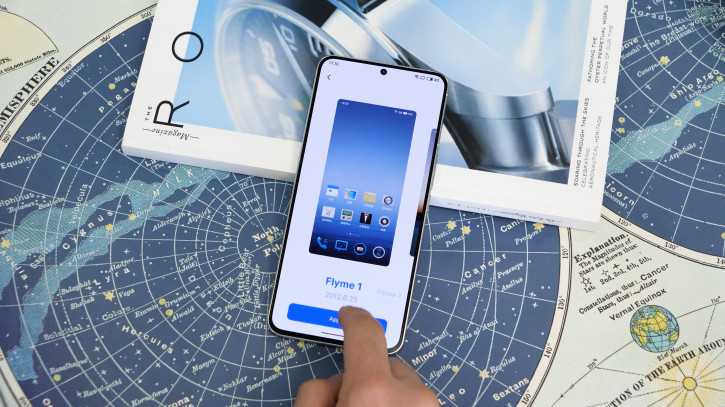
Snapdragon 8 Gen 2: Outlook
(Image credit: Tom’s Guide)
Because of Qualcomm’s prominence as a chipmaker, there’s no doubt we’ll see the Snapdragon 8 Gen 2 in some very significant phones. And with the release timeframe Qualcomm is promising, devices powered by the Snapdragon 8 Gen 2 are going to hit retail shelves very soon.
When they do arrive, we’ll be looking forward to seeing how performance compares to Apple’s A16 Bionic and A15 Bionic as always. And the improvements to the Qualcomm AI engine makes us curious to see how phone makers take advantage of that: will Snapdragon 8 Gen 2 devices give Google’s Tensor-powered Pixels a run for their money when it comes to AI-fueled experiences?
We can’t answer these questions until Snapdragon 8 Gen 2 phones arrive. But 2023 is already shaping up to be a very interesting year on the smartphone front.
Qualcomm Snapdragon 8 Gen 2 бенчмарки, рейтинги и тесты
Пользователям Qualcomm Snapdragon 8 Gen 2 стоит ожидать, что благодаря Adreno 740 GPU в бенчмарке Antutu их смартфон наберет около 1255633 баллов, в тесте Geekbench — 4506 / 1387, а в рейтинге 3Dmark Benchmark результат составит 9870 очков.
| Бенчмарки, рейтинги и тесты | Qualcomm Snapdragon 8 Gen 2 |
|---|---|
| Antutu | |
| Geekbench | 4506/1387 |
| 3DMark | 9870 |
Antutu
Qualcomm Snapdragon 8 Gen 2 набрал около 1255633 баллов в бенчмарке Antutu и имеет лучшую производительность в сравнении с процессором MediaTek Dimensity 9200 тестовая оценка которого составила 1243866 баллов, но все же результат не так хорош, как у чипа MediaTek Dimensity 9200+ с его 1312873 очками. Такой результат стал возможен благодаря встроенному GPU Adreno 740. Для теста мы использовали такие смартфоны как Huawei P70 Art и Asus Zenfone 10. Больше результатов в таблице ниже.
| Процессор | Количество баллов в Antutu benchmark |
|---|---|
| Qualcomm Snapdragon 8 Gen 3 | |
| Qualcomm Snapdragon 8+ Gen 2 | |
| Apple A17 Pro | |
| MediaTek Dimensity 8300 | |
| MediaTek Dimensity 9200+ | |
| Qualcomm Snapdragon 8 Gen 2 | 1255633 |
| MediaTek Dimensity 9200 | |
| Google Tensor G3 | |
| Apple A16 Bionic | |
| Qualcomm Snapdragon 8+ Gen 1 | |
| MediaTek Dimensity 9000+ |
Geekbench
Qualcomm Snapdragon 8 Gen 2 набрал около 4506 / 1387 баллов в бенчмарке Geekbench и показал себя лучше, чем MediaTek Dimensity 9200, который набрал 4461 / 1422 баллов в этом тесте. Однако это все еще ниже, чем результат MediaTek Dimensity 8300 с его 4814 / 1501 очками. Тестирование проводилось на таких телефонах как Huawei P70 Art с графическим чипом Adreno 740 GPU и Asus Zenfone 10. Вот еще несколько результатов.
| Процессор | Количество баллов в тесте Geekbench |
|---|---|
| MediaTek Dimensity 9200+ | 5613/2102 |
| Qualcomm Snapdragon 8+ Gen 2 | 5217/1778 |
| Apple A16 Bionic | 5052/1903 |
| Apple A15 Bionic | 4874/1769 |
| MediaTek Dimensity 8300 | 4814/1501 |
| Qualcomm Snapdragon 8 Gen 2 | 4506/1387 |
| MediaTek Dimensity 9200 | 4461/1422 |
| MediaTek Dimensity 9000+ | 4328/1296 |
| Qualcomm Snapdragon 8+ Gen 1 | 4328/1298 |
| MediaTek Dimensity 9000 | 4288/1270 |
| Samsung Exynos 2200 | 4288/1287 |
3DMark
Qualcomm Snapdragon 8 Gen 2 набрал около 9870 баллов в бенчмарке 3DMark и превзошел результат Apple A15 Bionic в 9558 баллов, но все же он не так хорош, как MediaTek Dimensity 9200 который заработал 10289 очков в этом же тесте. Результаты были получены на следующих смартфонах: Huawei P70 Art и Asus Zenfone 10 с видеочипом Adreno 740 GPU.
| Процессор | Количество баллов в 3DMark Benchmark |
|---|---|
| Apple A17 Pro | |
| Qualcomm Snapdragon 8+ Gen 2 | |
| Apple A16 Bionic | |
| MediaTek Dimensity 9200+ | |
| MediaTek Dimensity 9200 | |
| Qualcomm Snapdragon 8 Gen 2 | 9870 |
| Apple A15 Bionic | |
| MediaTek Dimensity 9000+ | |
| Qualcomm Snapdragon 8+ Gen 1 | |
| Qualcomm Snapdragon 8 Gen 1 | |
| MediaTek Dimensity 9000 |
Snapdragon 8 Gen 2: Snapdragon Elite Gaming
Like the Kryo CPU, the Adreno GPU on board the Snapdragon 8 Gen 2 also gets a boost over its predecessor. Qualcomm expects a 25% bump in graphics rendering and a 45% boost to power efficiency, each when compared to the Snapdragon 8 Gen 1.
Qualcomm is also adding to the array of Snapdragon Elite Gaming features, the chip maker’s initiative for bringing console-quality gaming to smartphones. The Snapdragon 8 Gen 2 will be Qualcomm’s first chipset to offer real-time hardware-accelerated ray tracing. That should mean more realistic light and reflections when you’re playing graphically demanding mobile games.
Also new is Snapdragon’s support for the Unreal Engine 5 Metahumans framework that’s been optimized for mobile. The added support should allow games to feature more photorealistic human characters.
Qualcomm says the Snapdragon 8 Gen 2 is the first mobile platform with Vulkan 1.3 support, boosting Vulkan performance by 30%.
Производительность и тесты
Если в предыдущие годы производители активно выпускали «бюджетные флагманы» с топовым железом и экономией на всём остальном, то в этом сезоне переключились на создание продвинутых середняков с прошлогодним Snapdragon 8+ Gen 1. В результате моделей на 8 Gen 2 в сегменте до 3500 юаней почти что и нет – можно вспомнить разве что Redmi K60 Pro и Nubia Z50. Ну и Meizu 20, конечно, ведь компания не стала скупиться и в бюджетную версию флагмана тоже поставила топовый чип. Вот как он ведёт себя в бенчмарках:
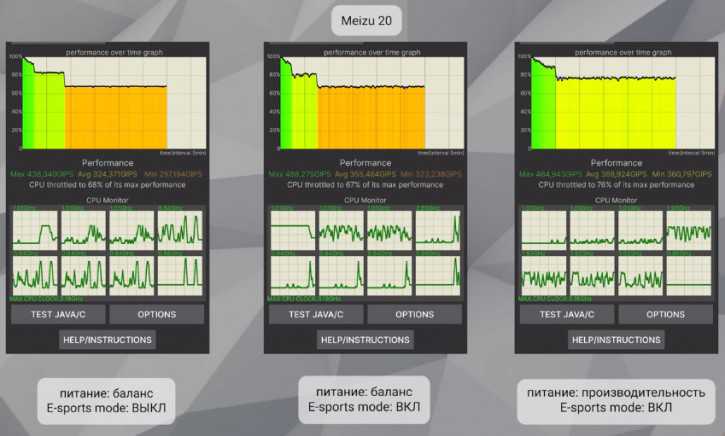
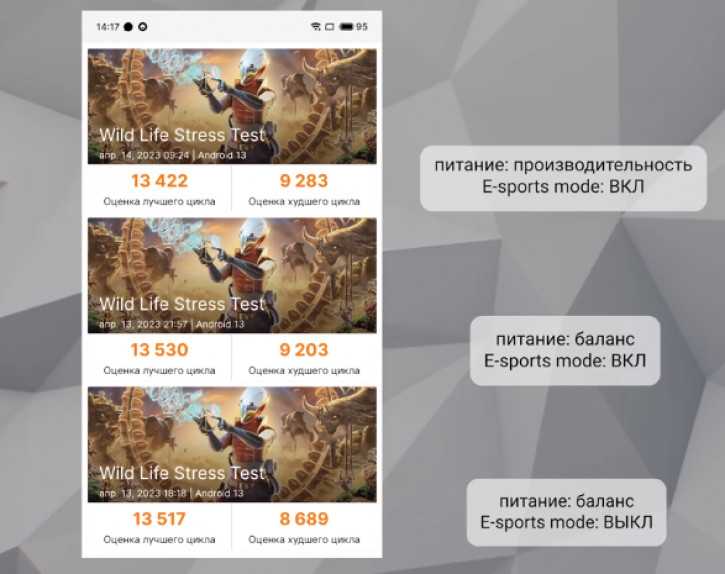
Что же, графики вполне радужные. Не как у игрофонов, конечно, но падение производительности некритичное, около 9000 очков в 3DMark в конце теста — это за глаза для игр. Если, конечно, производитель не накосячил в прошивке. А Meizu сделала именно это, к сожалению. Во-первых, в большинстве игр не работает герцовка даже при выставленных 144 Гц, исключение составит только Brawl Stars. Во-вторых, иногда на телефоне начинают лагать даже простенькие игры типа Tacticool. Причём прямо конкретно так лагать. Иногда, что странно, эти же игры не лагают.
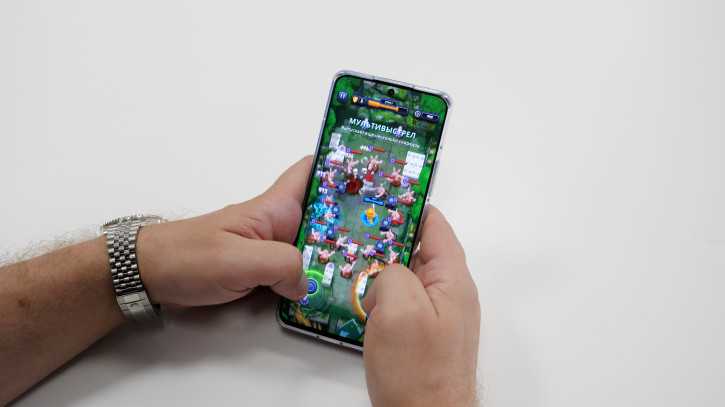
Но если вам повезёт и игра не будет лагать, то вы почти наверняка сможете насладиться геймплеем. Даже в Genshin Impact на максималках – а это наш «бенчмарк» требовательной игры – случаются лишь микроподлагивания. И не только в первые минуты игры, но и после длительного прогрева. А в основном частота кадров держится близко к 60 fps. В играх попроще (я тестировал SuperTuxKart, Sky: Дети Света, Hungry Shark World) дела тоже обстоят отлично. Если вы не столкнётесь с багом, конечно.

Ёмкость аккумулятора Meizu 20 не так уж велика: 4700 мАч. Поскольку я тестировал телефон в 144-Гц режиме без работающей адаптивной герцовки, результаты у меня получились пугающие: 20% за час в игре, 15% за час в браузере и 8% за час просмотра видео. Итого – 43% за три часа использования в смешанном режиме. На практике – не больше шести часов экрана на одном заряде. Если сделать выбор в пользу 90/120 Гц, результаты станут получше, особенно если вы много времени проводите в соцсетях и мессенджере.
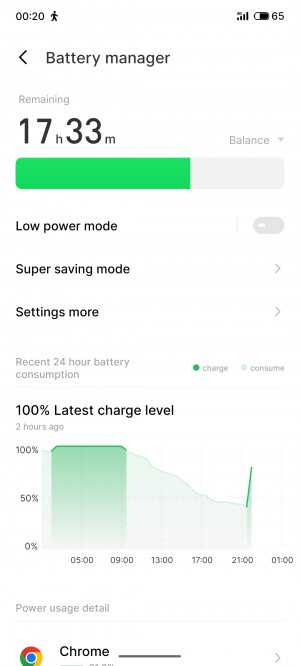
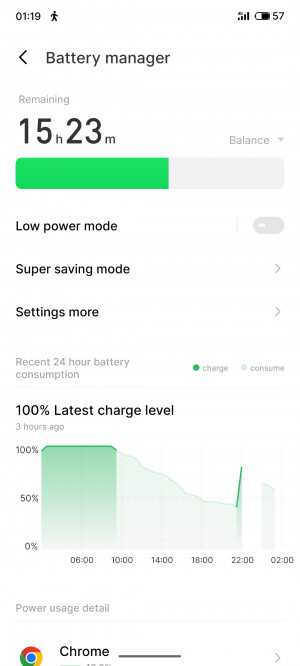
Мощность комплектной зарядки составляет 80 Вт, однако сам Meizu 20 поддерживает только 65-Вт зарядку. Время заряда зависит от условий тестирования; у Евгения во время подготовки получилось зарядить смартфон с нуля до сотки за 50 минут, у меня – только за 58 минут. При этом после 40 минут результат был почти одинаковый (90% у меня и 93% у Евгения), а вот дальше что-то пошло не так. Впрочем, даже в тесте Евгения средняя эффективная мощность зарядки составила 22 Вт (34% от заявленной), а пиковая – 44 Вт в первые пять минут (68% от заявленной).
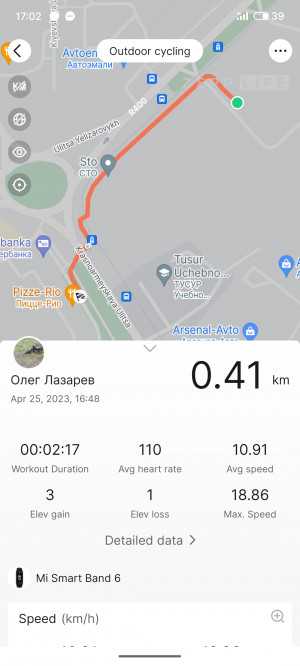
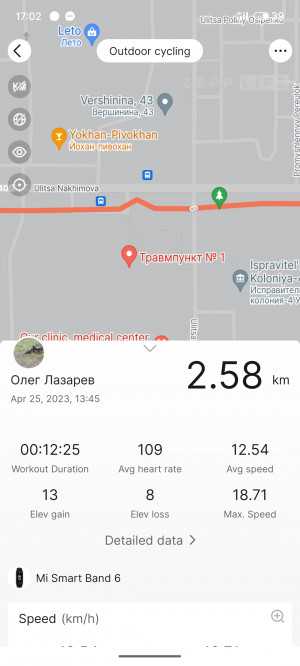 Точность и скорость позиционирования GPS — очень хорошая
Точность и скорость позиционирования GPS — очень хорошая
FEATURES
- Our Qualcomm AI Engine includes:
- Qualcomm Hexagon Processor
- First Snapdragon Mobile Platform with hardware-based micro tile inferencing to run complex neural networks
- Hexagon Direct Link allows all cores to work faster and more efficiently with Hexagon via a physical link to reach the highest performance
- Qualcomm Sensing Hub
- Dual-AI processors powering new experiences like direct-to-app voice assistance
- Always-on and ultra-low power for audio, sensors and always-sensing camera
- Support for all precisions (INT4, INT8, INT16, FP16)
- Qualcomm Hexagon Processor
- Our first-ever Snapdragon Mobile Platform with a Cognitive ISP
- Snapdragon Sight Technology features:
- Real-time Semantic Segmentation for Photo and Video Capture recognizes and optimizes each aspect within a frame
- Always-Sensing Camera featuring AI for quick and easy face detection and increased privacy
- Bokeh Engine 2 provides professional level sharpness, color, and depth
- Pro Sight Video Capture provides 5x larger file sizes for better quality footage and professional editing capabilities
- Quad Computational HDR Video Capture (with QDOL image sensors) and support for Staggered HDR image sensors
- AV1 codec for video playback
- Snapdragon Sight Technology features:
- Full suite of Snapdragon Elite Gaming features
- The industry standard for Real-time Hardware Accelerated Ray Tracing for improved lighting, shadows, and illumination
- First Snapdragon mobile platform with Game Post Processing Accelerator adds effects like bloom, depth of field, motion blur, and more – with up to 75% improved performance
- First Snapdragon mobile platform to support Vulkan 1.3 APIs for up to 30% Vulkan performance uplift
- First Snapdragon mobile platform with support for Unreal Engine 5 MetaHumans framework for realistic human characters
- Qualcomm Kryo CPU features next-gen micro-architecture for 40% more power efficiency3
The new micro-architecture has converted one of the efficiency cores into a performance core for a more robust overall CPU configuration
- Qualcomm Adreno GPU delivers up to 25% improved performance and 45% better power efficiency
- Supports Snapdragon Sound Technology for:
- Spatial audio with head tracking2 for complete surround sound immersion
- Ultra-low latency Bluetooth streaming <48ms
- CD-quality lossless music streaming
- 32kHz super wideband voice call quality with aptX Voice
- Featuring our integrated Snapdragon X70 5G Modem-RF System
- 5G Dual-SIM Dual-Active (DSDA) enables the simultaneous use of two 5G+5G or 5G+4G SIM cards for ultimate user flexibility
- Qualcomm 5G Ultra-Low Latency Suite helps achieve unmatched 5G low-latency for hyper-responsive 5G user experiences and applications
- Blazing download speeds up to 10 Gigabit per second for flawless entertainment and nonstop productivity
- Qualcomm FastConnect 7800 Mobile Connectivity System delivers the first announced Wi-Fi 7 commercial solution featuring HBS Multi-Link for uninterrupted connectivity
- Snapdragon Secure features the latest in isolation, cryptography, key management, attestation, and more.
Qualcomm Snapdragon 8 Gen 2: Тесты в играх
Графический процессор Adreno 740 (GPU) в Qualcomm Snapdragon 8 Gen 2 отвечает за производительность. В тестах он показывает скорость от 60 до 120 fps (кадров в секунду). Мы собрали результаты обзоров в таких играх, как PUBG или Genshin Impact. Таблица ниже подскажет вам, пойдет ли та или иная игра на вашем устройстве.
| Тесты в играх | Qualcomm Snapdragon 8 Gen 2 |
|---|---|
| PUBG: Mobile | 120 кадров в секунду (fps) |
| PUBG: New State | 60 кадров в секунду (fps) |
| Call of Duty: Mobile | 60 кадров в секунду (fps) |
| Fortnite | 60 кадров в секунду (fps) |
| Genshin Impact | 60 кадров в секунду (fps) |
| Mobile Legends: Bang Bang | 60 кадров в секунду (fps) |
Design
I think its real “surprise” should be the design. The flat screen with a flat frame looks pretty good. This year’s standard version is no longer a small 6.2-inch phone, which means there’s one less brand in the world that makes small phones.
Seeing this lens module, I know what you’re thinking. And it’s not the first time they’ve done this. Meizu has been copying the design of Samsung’s flagship phones for a long time before. But Samsung’s phones are really beautiful, and Meizu at least didn’t copy the wrong phone. And it also has better build quality than any other phone in the sub-$500 range.
If you need a lower-priced S23, you can try the Meizu 20. To be clear, I’m not mocking it, this is a real compliment. The Samsung S series has what I consider to be the top CMF in Android phones, so looking like that isn’t a bad thing sometimes.






























